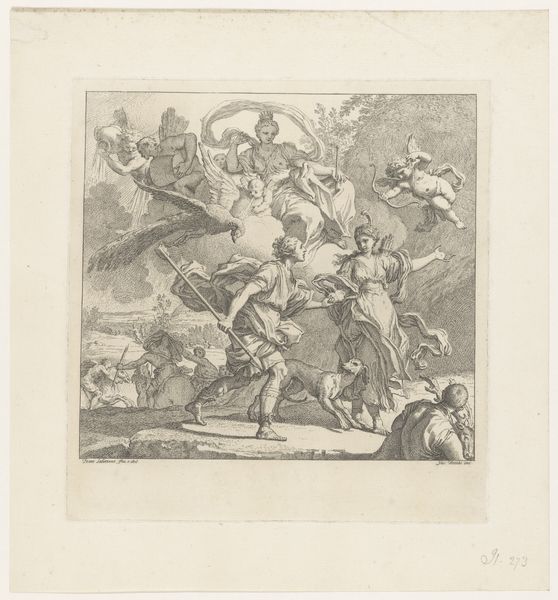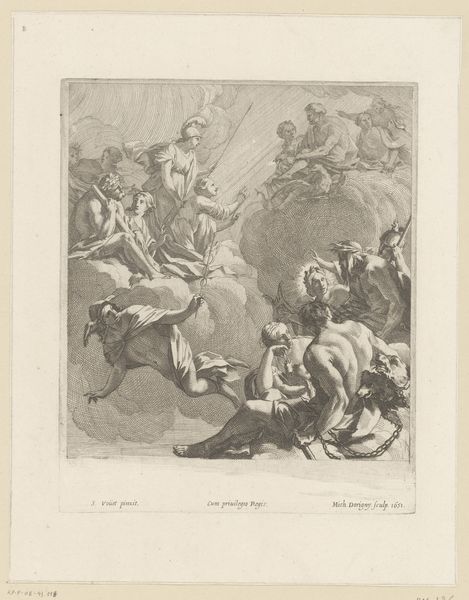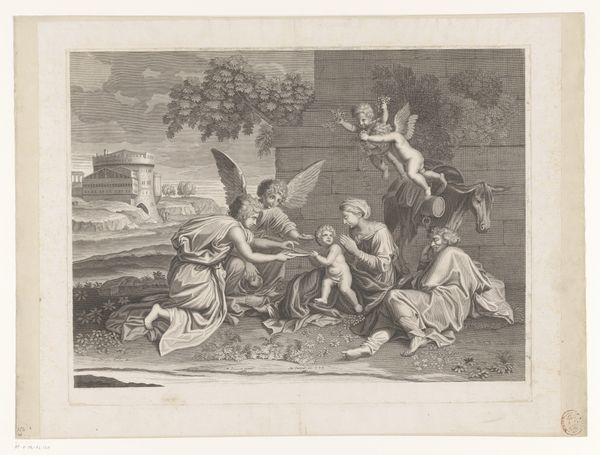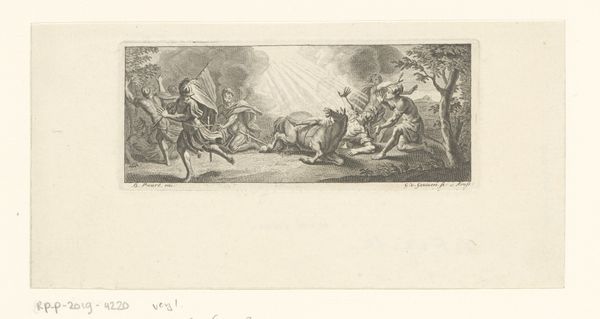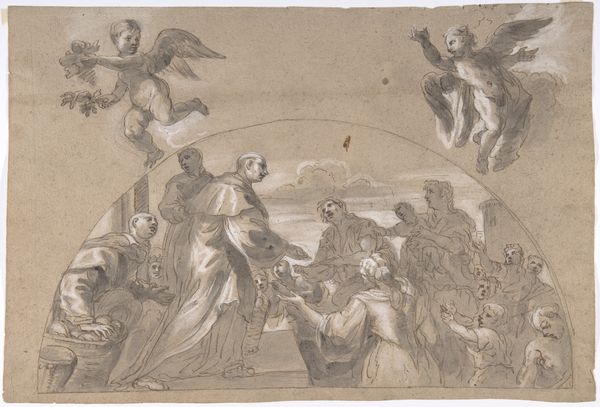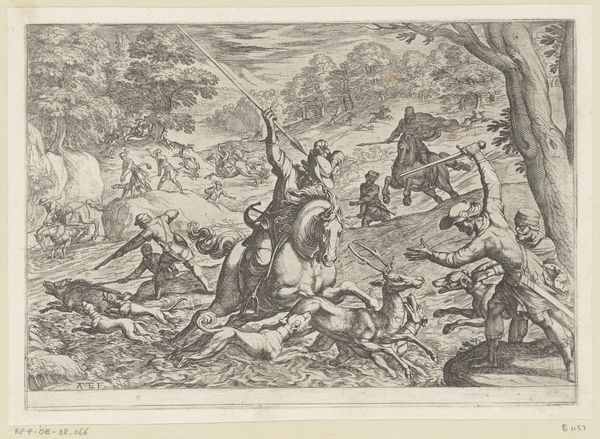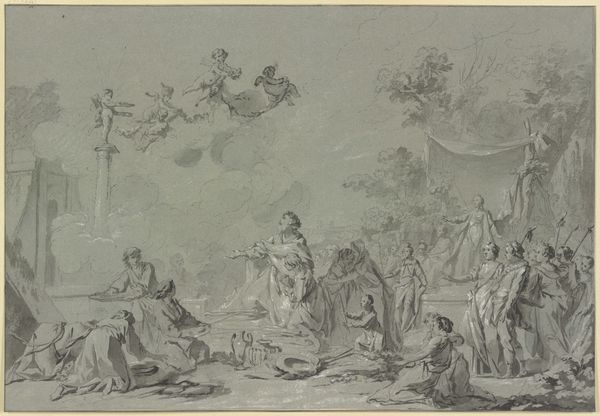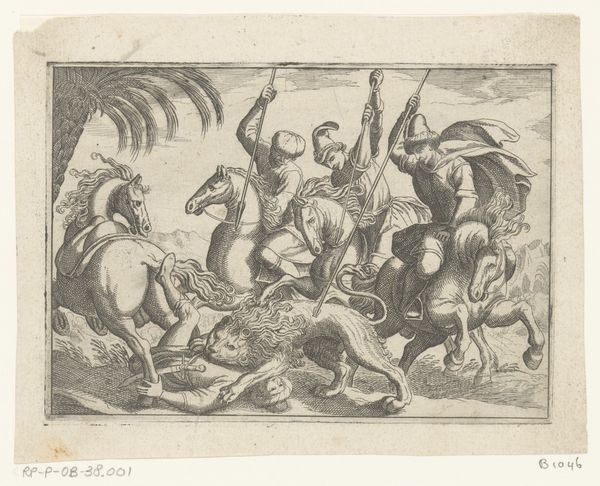
print, engraving
#
ink drawing
#
allegory
#
baroque
# print
#
pen sketch
#
figuration
#
line
#
history-painting
#
academic-art
#
engraving
Dimensions: height 242 mm, width 453 mm
Copyright: Rijks Museum: Open Domain
Editor: Here we have Christian Heckel's engraving, "Aeneas Before Jupiter, Surrounded by Venus and the Graces," placing it sometime between 1651 and 1705. It's got a busy, theatrical feel, all these figures floating on clouds. What symbols jump out at you? Curator: I'm immediately drawn to the figures themselves, their gestures and placement speaking volumes. Note how Aeneas, often considered the father of the Roman people, is presented to Jupiter. The eagle and peacock, symbols associated with Jupiter and Juno respectively, underscore themes of power and legitimacy. This isn't just a pretty picture; it’s a carefully constructed argument. What might those arguments have been in this moment of history? Editor: So, you're saying the artist chose these symbols very deliberately to connect Aeneas to Roman authority? The repetition of Laurel wreaths and leafy branches almost suggest continuity and celebration of rule and the state. Curator: Exactly. Consider the cultural context. This print draws upon centuries of inherited symbols and cultural memory related to Roman power. Are we perhaps seeing Heckel trying to visualize what it meant to be a leader in his time through allegory? Editor: That’s interesting. It shifts my perception. I initially just saw it as a mythological scene. Now, it’s like Heckel is using mythology to make a point about leadership, or something similar, perhaps a projection about the past that reflects on contemporary society of the 17th century. Curator: Precisely. The image acts as a memory theater for its viewers, a space where historical, cultural and political themes interact in a constant dialogue with the past and present. Editor: I never thought of an image that way before, thank you.
Comments
No comments
Be the first to comment and join the conversation on the ultimate creative platform.
